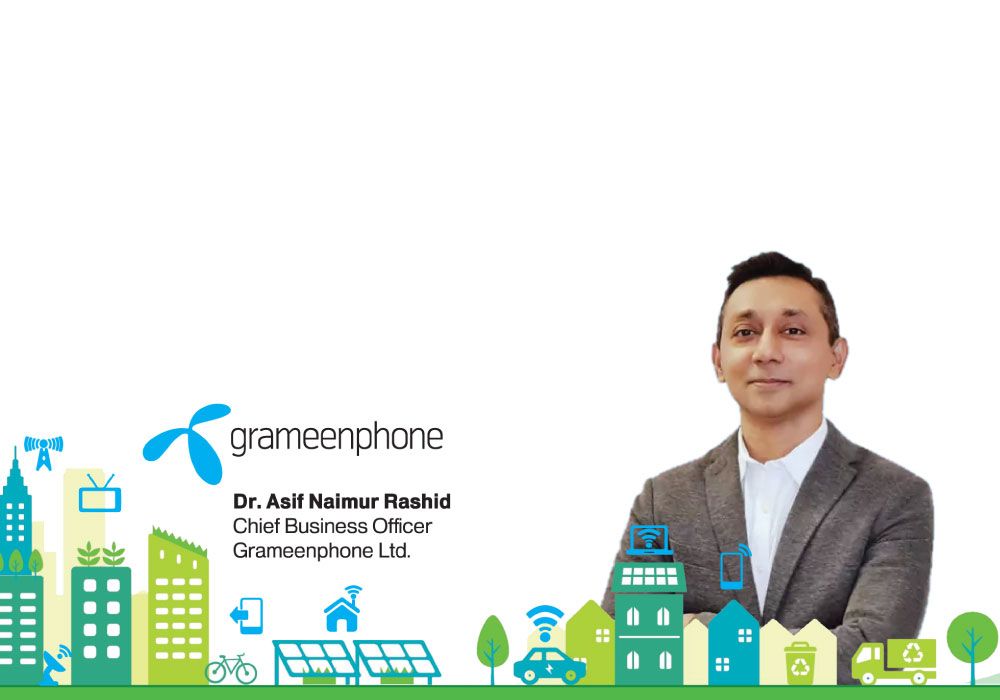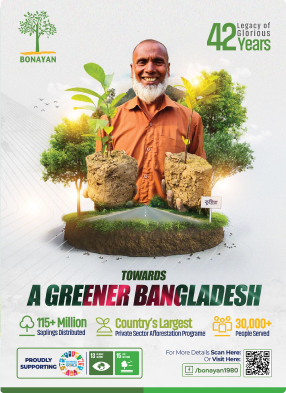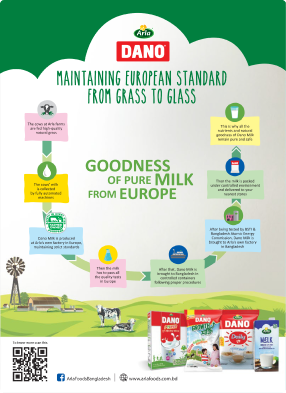- info@ficci.org.bd
- |
- +880248814801, +880248814802
- Contact Us
- |
- Become a Member
- |
- |
- |
- |
- |

Introduction
If we have noticed the rate of acceleration that the world of computing technologies is experiencing from the continued exponential rise of GPUs and Gen Al that started a few years back, we know it with certain confidence that the definition of commoditizing key technologies and their value creation for mass people is much closer than we previously thought. We can certainly hope now that artificial intelligence will soon be seen in the form of hyper-personalized intelligence available at a surprisingly lower cost in our mobile phones, liberating many constraints of human-social aspects that currently slow us down.
Globally, we are indeed living in an era of rapidly evolving landscape of digital technology. In Bangladesh also, the demand for hyper-personalization in mobile native apps or PWA (progressive web apps) is currently at an all-time high. Users today expect all mobile apps to not only meet their basic needs but to also provide tailored experiences that resonate with their individual preferences and behaviors. With over 90 million smartphone users in the country, mobile applications are central to daily life, from communication and entertainment to e-commerce and banking.

Keeping pace with this need, the app ecosystem in Bangladesh is also rapidly becoming a significant driver of economic growth. As of 2024, the economic value generated by mobile and web applications is substantial, and various factors are expected to contribute to continued growth over the next decade. The app market in Bangladesh is projected to be worth several billion dollars by the end of 2024. Key segments, including e-commerce, fintech, health tech, and entertainment, contribute significantly to this value. Some of the core areas where growing uptake of digital economy will happen through increased app usage by people are highlighted below.
E-commerce Expansion: The e-commerce sector is expected to grow at a good pace, driven by increasing internet penetration and ever-changing consumer behaviors. This growth will create more opportunities for app developers and businesses, leading to a larger economic footprint. Platforms like Daraz, Pickaboo and Chaldal have gained immense popularity, and the trend of online shopping continues to grow, especially among younger Bangladeshi consumers.
Fintech Innovation: As financial services in Bangladesh become more digitized, the fintech sector will continue to expand, offering innovative solutions for payments, loans, and investments. This growth will not only enhance financial inclusion but also create new revenue streams for app developers. Mobile financial services apps such as bKash (with more than 70 million user base) and Nagad (with around 90 million user base) have revolutionized financial transactions, promoting financial inclusion and digital payments across various demographics. Major Banks in Bangladesh have already modernized their banking apps, making them easier to use which, in return, is helping the banks to get more of their customers preferring apps to complete their financial transactions.
Increased Mobile Usage: With the growing smartphone user base, mobile applications will dominate the digital landscape. This trend will boost the demand for various types of apps, further increasing their economic value. Grameenphone's My GP app (with over 20 million monthly active user base), Robi's My Robi and My Airtel apps (with a combined active user base of over 15 million) and Banglalink's My BL app (with around 8 million active user base) already have personalized a great deal of telecom and value-added services for all these app users.
Investment in Tech Startups: Venture capital investment in Bangladeshi tech startups is expected to rise. We have seen some good cases of startup funding taking place in the past, but it has not quite peaked up as expected yet. But with more customers leaning towards digital services, more funding should follow that will lead to the development of new technologies and services that can significantly impact the economy.
Global App Market Footstep: As Bangladeshi apps gain recognition internationally, there will be opportunities for export-oriented growth, contributing to foreign exchange earnings and enhancing the global presence of local tech companies. The global mobile app market was valued at $228.98 billion in 2023 and is expected to grow at a compound annual growth rate (CAGR) of 14.3% from 2024 to 2030. Consumer spending on apps reached $171 billion in 2023.
Focus on Sustainability: Apps that promote sustainable practices, such as eco-friendly products and services, will attract consumer interest, driving economic growth in this niche market.
Expansion into Rural Areas: With mobile operators thriving to expand their 4G coverage areas across the country, with better internet access now spreading to rural regions, there will be new opportunities for app development and usage, tapping into previously underserved markets.
All the above focus areas would continue to see significant 'app-enrichment' of capabilities for all industries allowing people to use their mobile phones more and more to initiate, and in many cases, complete transactions fully online, from within the app ecosystem itself, needing highest level of user-centric micro-segmentation features.
One of the most promising technologies driving this level of personalization is reinforcement learning (RL). This article explores how reinforcement learning Al models can significantly enhance the hyper-personalized app usage experience, transforming the way users interact with digital platforms.

Understanding Reinforcement Learning (RL)
Reinforcement learning is a subset of machine learning where the Al agents learn to make decisions by interacting with the environment they are exposed to. As opposed to traditional supervised learning methods in Al, where Al models learn from labeled data, RL focuses on learning through trial and error, receiving feedback in the form of rewards or penalties based on the actions taken. This unique approach enables RL models to adapt to dynamic environments, making them particularly effective in scenarios where user preferences evolve over time.
As indicated earlier in this article, in today's digital ecosystem, consumers are inundated with choices. Whether it's shopping, entertainment, or social networking, users often feel overwhelmed. Hyper-personalization aims to alleviate this dilemma by delivering content, services, recommendations, and/ or experiences tailored to individual user preferences. This enhances successful conversion rates for businesses making the customers also happier. The hyper-personalized interactions increase customer loyalty, future engagement and buying behavior, that ultimately drives revenue for businesses. According to some international research works, global reinforcement learning market was valued at $2.8 billion in 2022, and is projected to reach $88.7 billion by 2032, growing at a CAGR of 41.5%.
How Reinforcement Learning Enhances Hyper-Personalization
 Dynamic User Profiles: One of the core components of hyper-personalization is understanding the user's sentiments. Reinforcement learning models can continuously learn from user interactions across different digital channels, adapting user profiles in real time. If a user frequently engages with content related to international traveling, the RL model can adjust its recommendations to prioritize similar topics. This adaptability contrasts with static models that rely on historical data and past trends only, often leading to outdated or irrelevant suggestions.
Dynamic User Profiles: One of the core components of hyper-personalization is understanding the user's sentiments. Reinforcement learning models can continuously learn from user interactions across different digital channels, adapting user profiles in real time. If a user frequently engages with content related to international traveling, the RL model can adjust its recommendations to prioritize similar topics. This adaptability contrasts with static models that rely on historical data and past trends only, often leading to outdated or irrelevant suggestions.
 Contextual Awareness: Reinforcement learning can also enhance hyper- personalization by incorporating contextual information. For instance, RL models can consider as input parameters the time of day, location, and even the user's mood based on past interactions. By understanding the context in which a user is interacting with an app, RL models can provide recommendations that are not only personalized but also timely and relevant. For example, suggesting a relaxing playlist from the music app during stressful times or workout plans during peak motivation periods can significantly enhance user experience.
Contextual Awareness: Reinforcement learning can also enhance hyper- personalization by incorporating contextual information. For instance, RL models can consider as input parameters the time of day, location, and even the user's mood based on past interactions. By understanding the context in which a user is interacting with an app, RL models can provide recommendations that are not only personalized but also timely and relevant. For example, suggesting a relaxing playlist from the music app during stressful times or workout plans during peak motivation periods can significantly enhance user experience.
 Reward-Based Learning: The reward mechanism inherent in reinforcement learning allows for a more nuanced understanding of user preferences. By implementing a system where users receive rewards for specific actions-like completing a task, engaging with content, or providing feedback-apps can gather data on what motivates users. This feedback loop helps refine the personalization algorithms, leading to increasingly relevant recommendations and a more engaging experience.
Reward-Based Learning: The reward mechanism inherent in reinforcement learning allows for a more nuanced understanding of user preferences. By implementing a system where users receive rewards for specific actions-like completing a task, engaging with content, or providing feedback-apps can gather data on what motivates users. This feedback loop helps refine the personalization algorithms, leading to increasingly relevant recommendations and a more engaging experience.
 Approaching Multi-Armed Bandit Problem: Reinforcement learning models can be instrumental in solving the multi-armed bandit problem, where the objective is to find the optimal balance between exploration (trying new content) and exploitation (recommending familiar content). This capability is crucial for hyper-personalization as it allows apps to introduce users to new experiences while maintaining their known preferences. For example, a streaming service might suggest newly released contents based on a user's viewing history while also promoting trending content that aligns with their interest areas.
Approaching Multi-Armed Bandit Problem: Reinforcement learning models can be instrumental in solving the multi-armed bandit problem, where the objective is to find the optimal balance between exploration (trying new content) and exploitation (recommending familiar content). This capability is crucial for hyper-personalization as it allows apps to introduce users to new experiences while maintaining their known preferences. For example, a streaming service might suggest newly released contents based on a user's viewing history while also promoting trending content that aligns with their interest areas.
 Adaptive Learning Over Time: User preferences in the digital world do not remain static; they evolve based on multiple factors like trends, seasons, and time. Reinforcement learning models are uniquely positioned to adapt to these shifts. By continuously learning from user interactions, these RL models can update their algorithms, ensuring that personalization efforts remain relevant. For instance, if a user starts engaging more with travel content at the beginning of the vacation season, the app can pivot to provide travel and accommodation related recommendations.
Adaptive Learning Over Time: User preferences in the digital world do not remain static; they evolve based on multiple factors like trends, seasons, and time. Reinforcement learning models are uniquely positioned to adapt to these shifts. By continuously learning from user interactions, these RL models can update their algorithms, ensuring that personalization efforts remain relevant. For instance, if a user starts engaging more with travel content at the beginning of the vacation season, the app can pivot to provide travel and accommodation related recommendations.
 Segmentation and Clustering: While hyper-personalization focuses on individual user experiences, reinforcement learning can also help identify patterns across user segments. By clustering users based on similar behaviors, RL models can tailor experiences not only for individuals but also for groups with shared interests. This dual approach allows for broader personalization strategies while still maintaining the unique touch that hyper-personalization demands.
Segmentation and Clustering: While hyper-personalization focuses on individual user experiences, reinforcement learning can also help identify patterns across user segments. By clustering users based on similar behaviors, RL models can tailor experiences not only for individuals but also for groups with shared interests. This dual approach allows for broader personalization strategies while still maintaining the unique touch that hyper-personalization demands.
 Real-Time Feedback Loop: Reinforcement learning thrives on real-time feedback, allowing apps to respond instantly to user actions. This immediacy can significantly enhance the user experience. For example, in a shopping app, if a user frequently skips certain categories, the app can adjust its recommendations almost in real-time, showcasing products more aligned with the user's changing preferences. This agility not only improves satisfaction but also reduces the likelihood of user frustration.
Real-Time Feedback Loop: Reinforcement learning thrives on real-time feedback, allowing apps to respond instantly to user actions. This immediacy can significantly enhance the user experience. For example, in a shopping app, if a user frequently skips certain categories, the app can adjust its recommendations almost in real-time, showcasing products more aligned with the user's changing preferences. This agility not only improves satisfaction but also reduces the likelihood of user frustration.
Challenges and Considerations
While the potential benefits of using reinforcement learning for hyper-personalization are significant, several challenges must be addressed:
Data Privacy: RL models need to continuously collect data for effective reinforcement learning. This sometimes raises privacy concerns as some data points could reveal sensitive information about the users' personal preferences. To mitigate this risk, users must be informed about how their data will be used, and a robust data protection measure must be put into effect.
Complexity of Implementation: Developing effective RL models requires significant expertise and computing resources. Organizations must invest in upskilling their human resources, in hiring experts from the industry and in technological infrastructure to harness the full potential of reinforcement learning.
Bias and Fairness: If there are biases in the training data for RL models, the models may inadvertently perpetuate these biases in the learning process, affecting outcome accuracy. Ensuring that personalization efforts are fair and equitable requires careful monitoring and quality assurance of training data.
User Trust: For hyper-personalization to be effective, consumers need to trust their app's recommendations. Building this trust requires transparency in how recommendations are generated by the RL models and a clear focus on delivering genuine value to the consumers.
Global References of Using RL in Similar Fields
E-commerce Platforms: Companies like Amazon, Taobao, eBay leverage RL models to personalize product recommendations based on user behavior. By continuously learning from shoppers' interactions, these platforms can suggest items that users are more likely to purchase, significantly increasing conversion rates.
Streaming Services: Netflix, Amazon Prime, Hulu use reinforcement learning to optimize their recommendation engines. By granularly analyzing user interactions, the platform tailors content suggestions, content placement in the screen and dynamically adjusting the content flow to improve user engagement and retention rates.
Social Media: Platforms like Facebook, X, Threads leverage RL to hyper-personalize news feeds. By understanding user preferences and interactions, these platforms can deliver content that matches with individual interests, enhancing user satisfaction.

Conclusion
For a digitally emerging country like Bangladesh, reinforcement learning holds immense potential in transforming the hyper-personalized app usage experience. By leveraging dynamic user profiles, contextual awareness, reward-based learning, and adaptive strategies, apps can provide customized experiences that will resonate deeply with individual mobile phone users in Bangladesh. While challenges such as data privacy, implementation complexity, and bias/ Al hallucination must be navigated, the benefits of enhanced user engagement, satisfaction, and loyalty are supreme. As we ride the next wave of technology transformation, the integration of reinforcement learning in hyper-personalized applications will give a boost to reshape the future of user interactions in the digital economy of Bangladesh.





